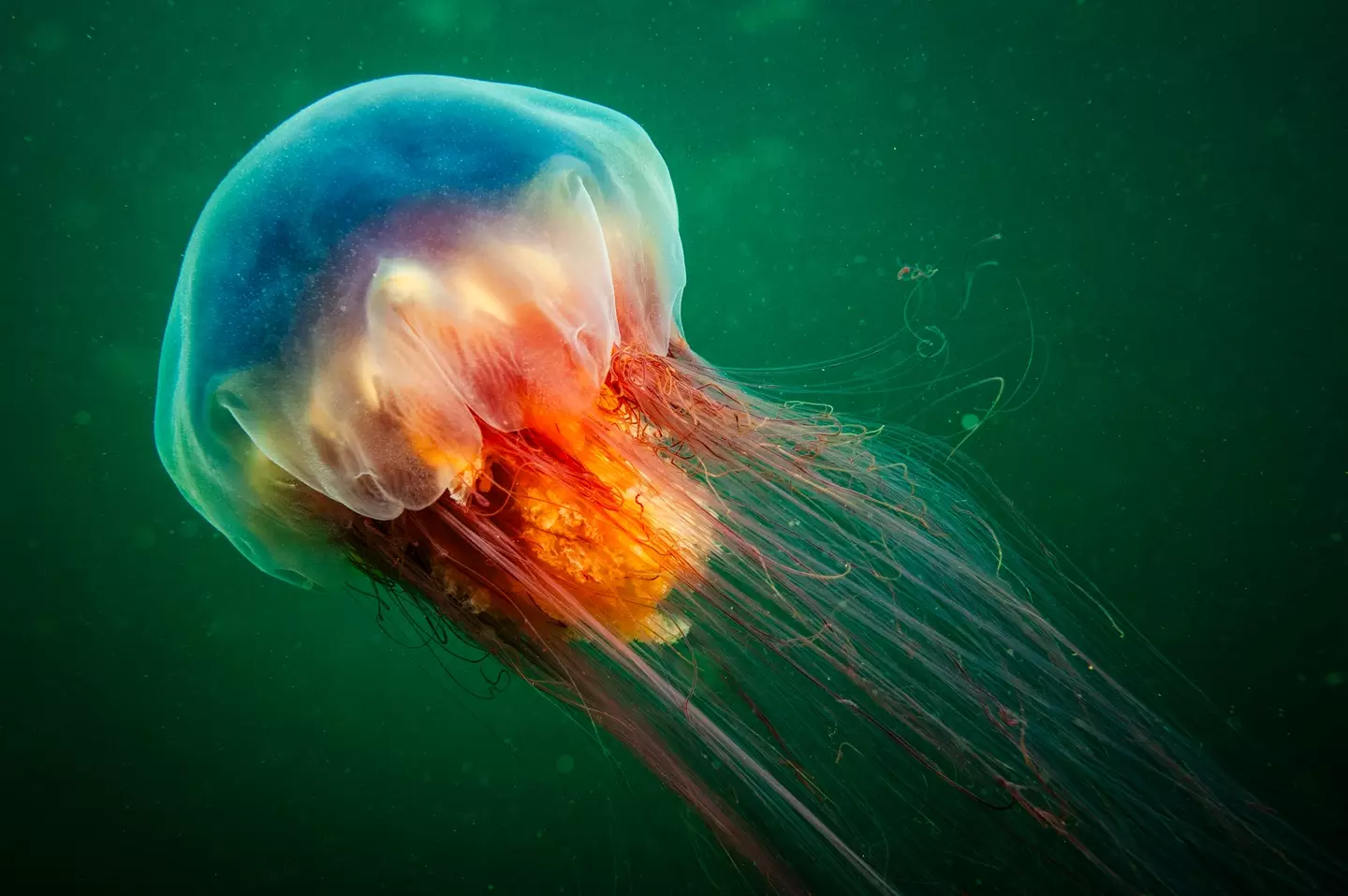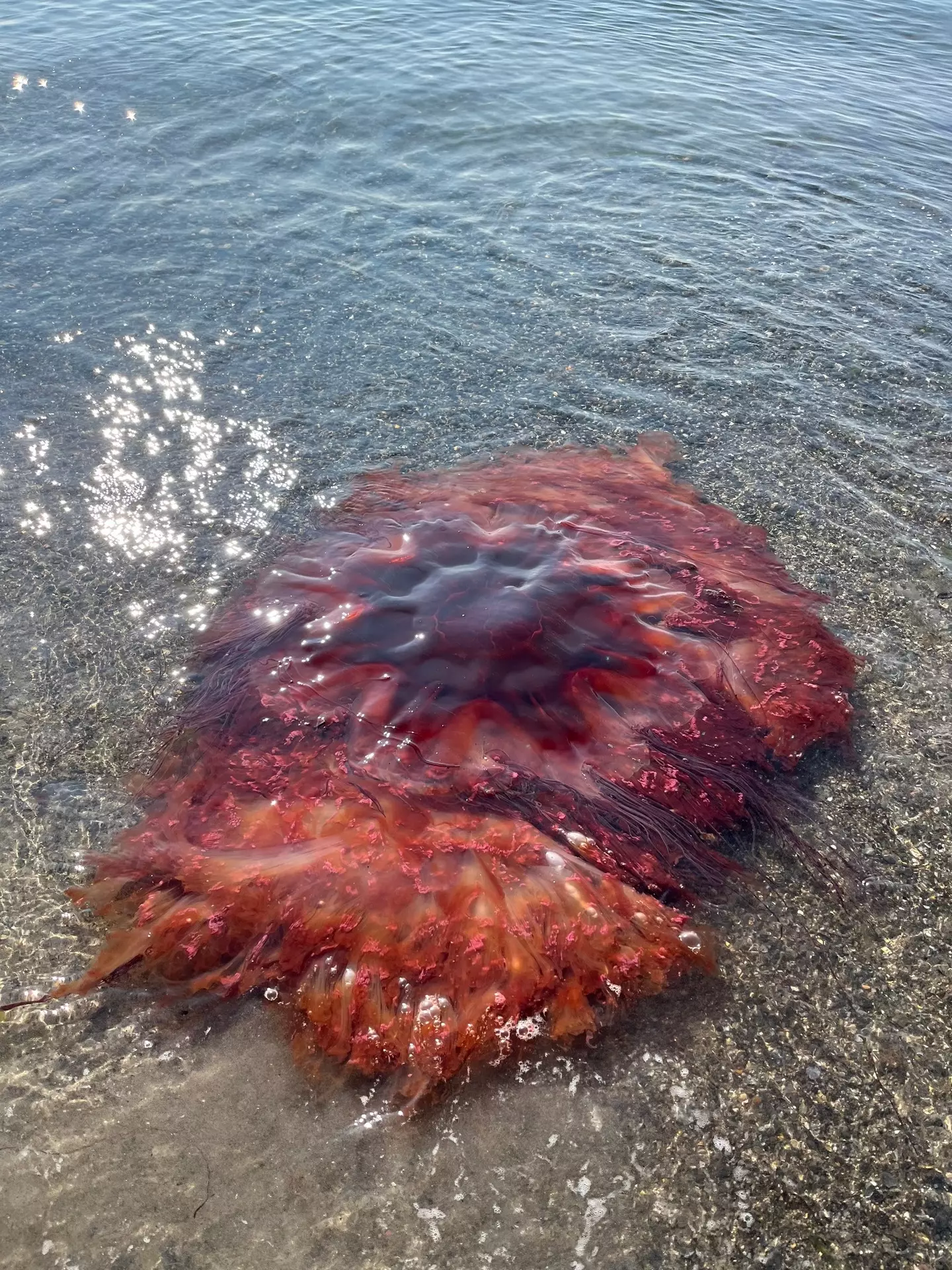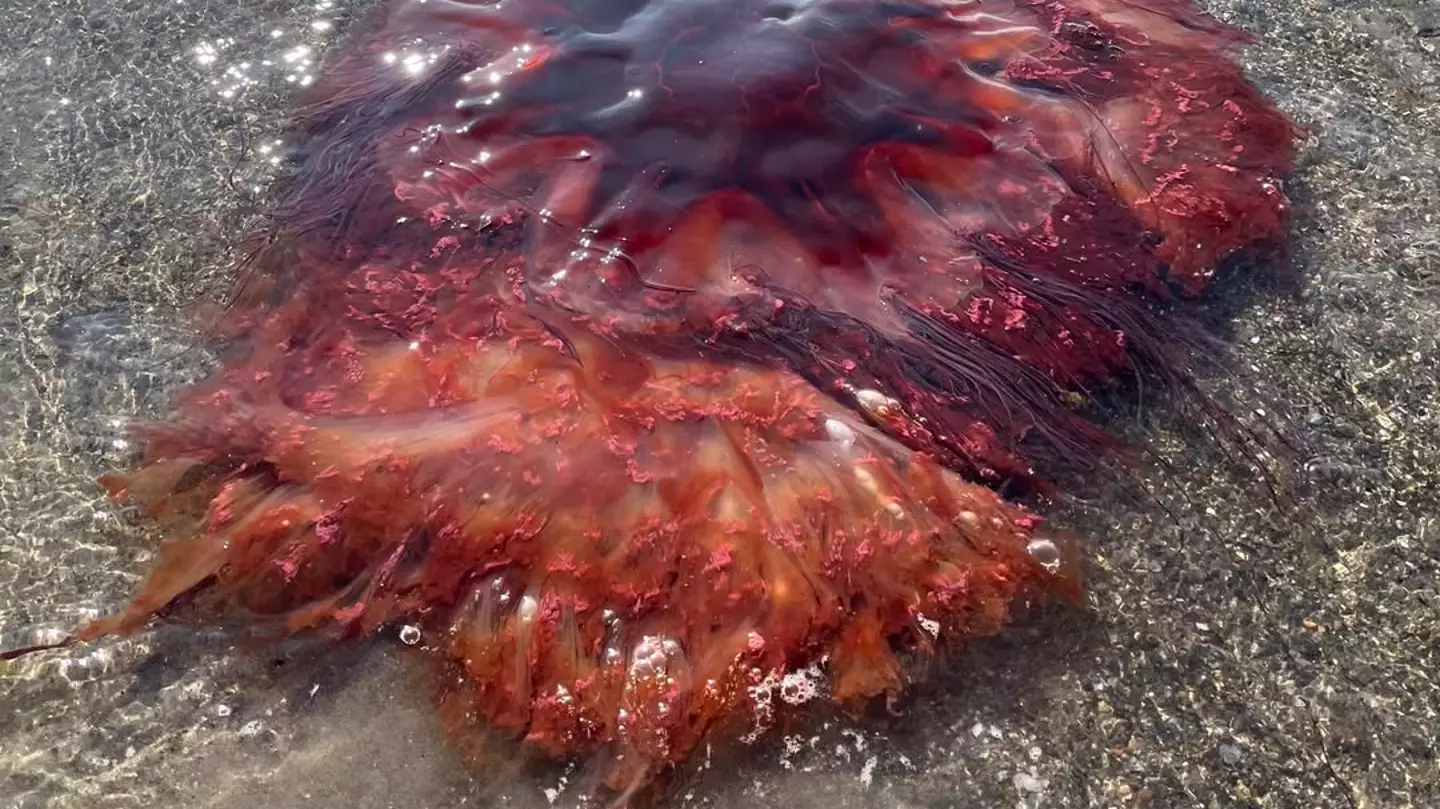Both locals and visitors have been cautioned regarding a massive jellyfish that has recently appeared on the coastline of a well-known holiday destination.
For those who have been stung by a jellyfish, the memory of the pain is unforgettable. Personally, my encounter occurred approximately 17 years ago when I was a child, and the experience was intensely painful at the time.
The jellyfish responsible for my sting was relatively small, yet as I pulled my arm away, its tentacles clung on. My reaction as an 11-year-old was to scream in agony, while my dad, hoping to help, suggested an old remedy that I wisely declined, choosing instead to endure the discomfort.

Had it been a lion’s mane jellyfish, I might have reconsidered. These jellyfish can grow up to 120 feet long, making them nearly as long as four-fifths of the Statue of Liberty, focusing on the statue itself.
Despite not matching the mass of blue whales, lion’s mane jellyfish boast tentacles that can be up to 12 feet longer than those of blue whales.
Recently, the City of South Portland in Maine has issued alerts about the presence of these large jellyfish on their beaches.
In a Facebook post, they shared: “Spotted this weekend at Willard Beach: A nearly 5-foot wide lion’s mane jellyfish!

“If you see one, here’s what to do: Don’t touch it! They sting; Observe it. They’re so interesting to watch, and pretty too; If you see one washed up at Willard Beach, notify a lifeguard and they will help it back into the water with a shovel.”
The Wildlife Trust advises that this species can inflict a painful sting, recommending medical consultation if swelling or welts are severe.
There has been an increase in sightings in recent years, especially since 2014 when Nicholas Record, a senior research scientist at Bigelow Laboratory for Ocean Sciences in East Boothbay, started monitoring them.
In a 2019 interview with weather.com, Record elaborated that nearly all recorded jellyfish sightings in the region were lion’s mane jellyfish.
“In a typical year, the biggest ones that people would report are typically the size of a dinner plate, and this year, I’ve gotten several reports of some that are two feet and a couple that are five feet across,” Record shared.
“They’re generally a sub-Arctic species and they’re not new to the Gulf of Maine by any means. But the size and just the fact that they’re all we’re seeing this year is what makes it unique.”

